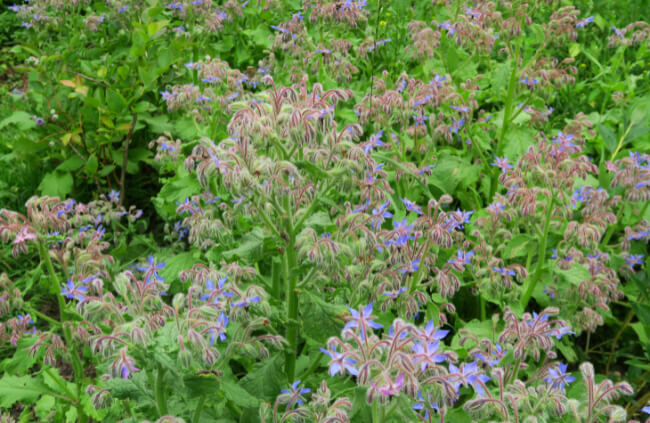One of my favourite herbs to grow is borage. In fact, I would go so far as stating that I couldn’t have an herb garden without borage in it. Borage is one of those unusual herbs that suffer from an ugly duckling identity crisis.
It grows alongside basil, oregano, marjoram and all the usual favourites yet it can’t be used in the way that these others are. You would never finely chop some borage leaf and combine it with your pasta dish. Or take some of its leaves and infuse for an herbal tea.
No, borage is not one of those herbs. It has its own distinct benefits and hopefully I will convince you that it needs to be incorporated in your garden too.
More...
Benefits of Growing Borage
While the leaves of the borage herb aren’t exceptionally tasty and won’t flavour your dish like most aromatic herbs, they do have one thing going for them. Their flowers! If you’ve ever seen borage flowers you will understand what I mean.
Fragile, star-shaped blue petals with a black spear-pointing centre make an incredible statement when they begin to bloom in late spring through early autumn. Not only are they amazing to look at and enjoy, they make a great accompaniment in salads and can even be candied to garnish desserts.
They have a mild peppery flavour that adds an extra taste to your salad as well as making it look unique.

Uses of Borage Leaves
Can anything be done with those borage leaves? Sure. Much like comfrey and yarrow, borage leaves are a great compost activator helping to speed up the composting process.
There are many medicinal uses for borage as well. Borage’s main identity in this area hinges on its use for stress relief. While the leaves aren’t exceptionally tasty, they can be made into an herbal tea useful for relaxation and calming.
They have also been used as an infusion for mothers who are struggling to breast-feed.
Are there any other uses for Borage?
Borage seeds are also being used extensively for their oil, which also has medicinal purposes. Borage oil’s characteristics have been shown to be excellent as an anti-inflammatory mediator and have been successful in the treatment of rheumatoid arthritis.
Ideal Conditions for Growing Borage
This is not a difficult herb to grow at all. You don't need to do anything special to prepare the soil for these plants apart from regular watering. They just self-seed year after year.
Borage prefers a well-drained soil and grows well in full-sun to part-shade. It prefers a slightly acidic soil and should be treated as an annual.
Published on June 4, 2023 by Gary Clarke
Last Updated on November 6, 2023




